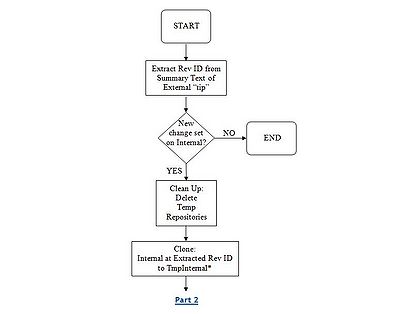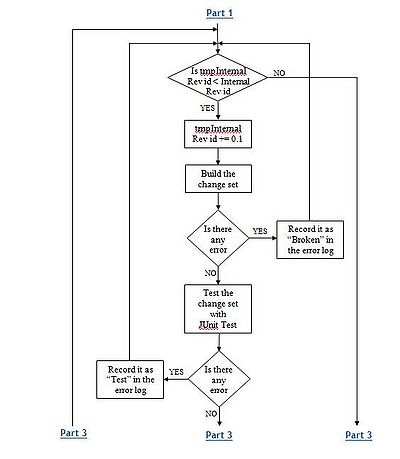Difference between revisions of "Continuous Integration/proposal"
| Line 4: | Line 4: | ||
At a scheduled time, a process will run that will compare the current Revision ID of the External Repository to that in the Internal Repository. If there is a new revision/s in the Internal Repository, then these changes will be pulled to the Controller.<br/> | At a scheduled time, a process will run that will compare the current Revision ID of the External Repository to that in the Internal Repository. If there is a new revision/s in the Internal Repository, then these changes will be pulled to the Controller.<br/> | ||
[[ Image: part1.jpg | 400px ]]<br/> | [[ Image: part1.jpg | 400px ]]<br/> | ||
| + | |||
| + | ===Part 2 – Building and Unit Testing Each Change Set=== | ||
| + | |||
| + | Each change set Pulled from the Internal Repository is built on the Controller using the “build” target in the Ant script and after a successful build is tested with JUnit Tests. <br/> | ||
| + | |||
| + | [[ Image: part2.jpg | 400px ]]<br/> | ||
Revision as of 21:03, 8 April 2011
Automating The Synchronization of NexJ Server Express External Repository(Oct 6, 2010)
Part 1 – Checking for new Change Sets on the Internal Repository
At a scheduled time, a process will run that will compare the current Revision ID of the External Repository to that in the Internal Repository. If there is a new revision/s in the Internal Repository, then these changes will be pulled to the Controller.

Part 2 – Building and Unit Testing Each Change Set
Each change set Pulled from the Internal Repository is built on the Controller using the “build” target in the Ant script and after a successful build is tested with JUnit Tests.
